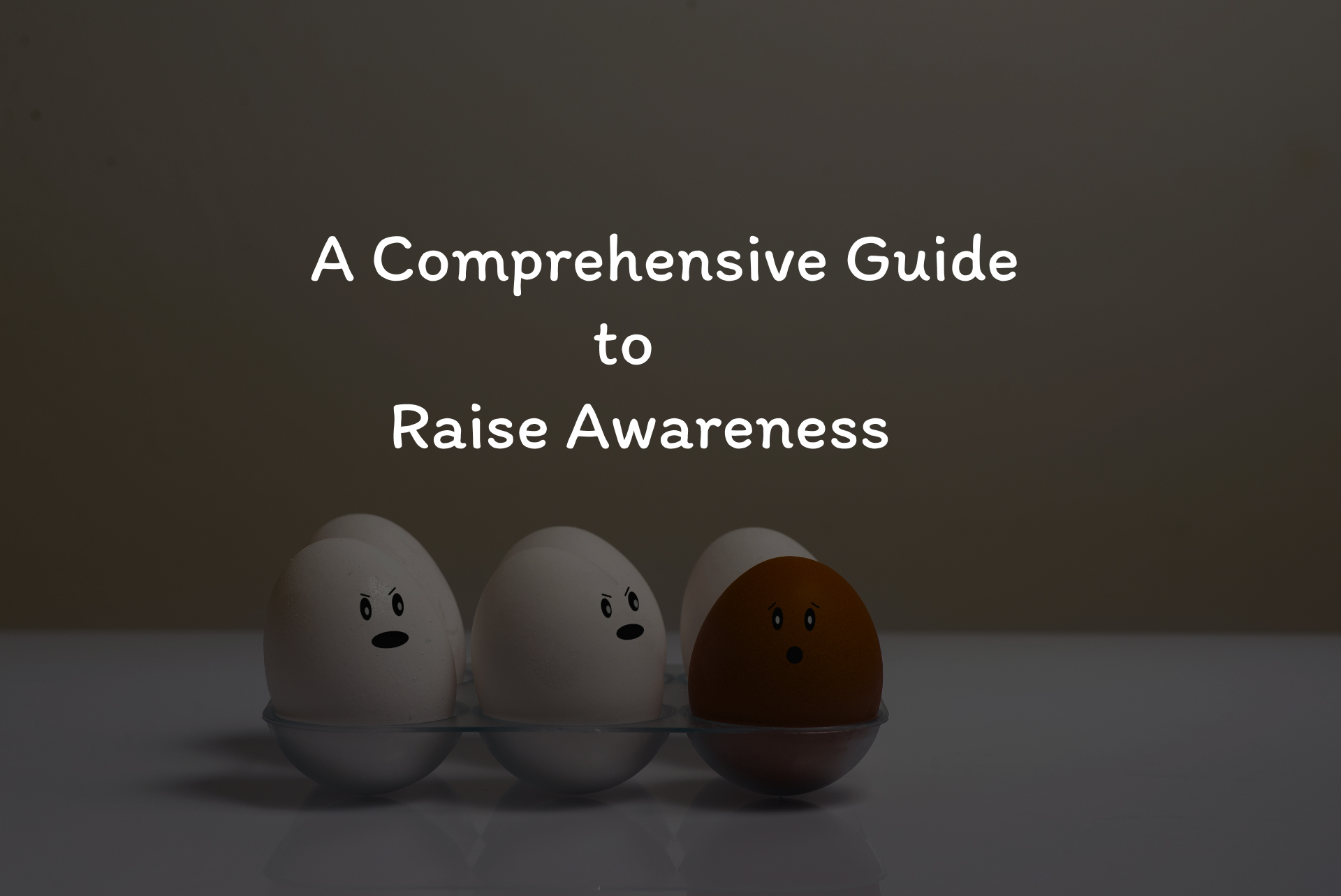
Blog / Discrimination
Unveiling Discrimination: A Definitive Guide to Foster Awareness

1. Introduction
Discrimination is an insidious societal issue that permeates various aspects of our daily lives. Its detrimental impact calls for a collective effort in raising awareness to combat it effectively. By shedding light on discrimination's definition, types, historical context, causes, effects, and ways to combat it, this definitive guide aims to foster awareness and inspire change.
2. Definition and Types of Discrimination
2.1 Understanding Discrimination
1. Defining discrimination and its underlying principles: Discrimination refers to the unfair treatment or prejudice against individuals or groups based on certain characteristics, such as race, gender, age, religion, sexual orientation, disability, or socio-economic background. It encompasses both intentional and unintentional actions that create disadvantages or privilege for different groups.
2. Explanation of direct and indirect discrimination: Direct discrimination occurs when someone is treated less favorably due to a protected characteristic they possess. On the other hand, indirect discrimination refers to situations where a seemingly neutral policy or practice disproportionately affects individuals or groups with protected characteristics.
3. Differentiating between overt and covert discrimination: Overt discrimination refers to blatant and explicit acts of prejudice, such as racial slurs or denying equal rights. Covert discrimination, however, is more subtle and manifests through implicit biases, microaggressions, or systemic barriers that perpetuate inequality.
2.2 Types of Discrimination
1. Racial discrimination: Racial discrimination involves treating individuals or communities unfairly based on their race or ethnicity. It perpetuates harmful stereotypes, limits opportunities, and hinders social and economic progress.
2. Gender discrimination: Gender discrimination occurs when individuals face unequal treatment or limited opportunities due to their gender identity or expression. It includes practices like pay inequality, gender-based violence, or restricted access to education and leadership roles.
3. Religious discrimination: Religious discrimination targets individuals or groups based on their religious beliefs or practices. It can involve denial of employment, harassment, or exclusion from social and cultural events due to one's faith.
4. Age discrimination: Age discrimination refers to the unfair treatment or exclusion of individuals based on their age. It commonly manifests in employment, where older workers may face barriers to hiring, promotion, or access to training opportunities.
5. Discrimination based on sexual orientation: Discrimination based on sexual orientation targets individuals or groups due to their real or perceived sexual orientation. It often results in unequal treatment, stigmatization, or denial of rights and benefits.
6. Disability discrimination: Disability discrimination encompasses unfair treatment or exclusion based on individuals' physical, mental, sensory, or cognitive impairments. It can manifest in inaccessible infrastructure, lack of reasonable accommodations, or employment discrimination.
7. Socio-economic discrimination: Socio-economic discrimination refers to treating individuals differently based on their social or economic status. It leads to disparities in access to education, healthcare, housing, and employment opportunities.
3. Historical Context of Discrimination
3.1 Discrimination through the Ages
1. Examination of discrimination in ancient civilizations: Discrimination has deep historical roots, as ancient societies practiced forms of social inequality and exclusion based on factors such as class, caste, and ethnicity. The hierarchies and prejudices within these civilizations set the stage for discriminatory practices that continue to resonate today.
2. Impact of discrimination during the colonial era: Colonialism played a crucial role in spreading discrimination worldwide. The exploitation of indigenous peoples, slavery, and racial hierarchies established during this era have had enduring consequences on marginalized communities.
3. Discrimination in the 20th century and its lasting effects: The 20th century witnessed significant movements for civil rights, women's suffrage, and LGBTQ+ rights. However, discrimination persisted and shaped national and international policies, leaving deep scars on societies and reminding us of the ongoing struggle for equality.
3.2 Key Moments in Discrimination History
1. U.S. Civil Rights Movement: The U.S. Civil Rights Movement, led by remarkable individuals such as Martin Luther King Jr., fought against racial segregation, voter suppression, and systemic racism. It paved the way for legal advances and sparked worldwide conversations about equality.
2. Apartheid in South Africa: The apartheid system, enforced in South Africa from 1948 to 1994, institutionalized racial segregation and discrimination. The brave efforts of activists, including Nelson Mandela, dismantled apartheid and inspired global efforts against racial oppression.
3. Women's Suffrage Movement: The Women's Suffrage Movement fought for women's right to vote and broader gender equality. Through persistent advocacy and activism, women gained the right to vote in many countries and challenged deeply ingrained gender biases.
4. LGBTQ+ Rights Movement: The LGBTQ+ Rights Movement has fought for equal rights and acceptance, challenging discriminatory laws, social stigma, and advocating for marriage equality and anti-discrimination protections.
4. Causes and Factors Contributing to Discrimination
4.1 Prejudice and Stereotypes
1. Role of prejudice in discrimination: Prejudice refers to preconceived opinions or attitudes towards individuals or groups based on perceived differences. It underlies discriminatory behavior by shaping beliefs, fueling biases, and perpetuating social divisions
2. Impact of stereotypes on discriminatory actions: Stereotypes, often rooted in ignorance or media portrayals, contribute to discriminatory actions. They oversimplify complex identities, reinforce negative perceptions, and justify unfair treatment of marginalized groups.
4.2 Socio-cultural Factors
1. Influence of cultural norms on discrimination: Cultural norms and traditions can either reinforce or challenge discriminatory practices. Societies that value diversity, inclusion, and equality foster environments that reduce discrimination, while those with deeply ingrained biases perpetuate harmful behavior.
2. A look at societal power structures and their connection to discrimination: Power structures play a pivotal role in perpetuating discrimination. Dominant groups hold social, economic, or political power, enabling them to enact and maintain systems that disadvantage marginalized communities.
4.3 Psychological Factors
1. Exploring psychological mechanisms behind discriminatory behavior: Psychological factors, such as social conditioning, fear, and the need for social belonging, contribute to discriminatory behavior. Understanding these mechanisms helps us identify and address the root causes of discrimination.
2. Impact of cognitive biases on perpetuating discrimination Cognitive biases, such as in-group favoritism or confirmation bias, shape perceptions and reinforce discriminatory attitudes. By becoming aware of these biases, we can consciously challenge them and promote fair treatment
5. Effects of Discrimination
5.1 Economic Consequences
1. Discrimination's impact on employment opportunities: Discrimination hampers equal access to employment opportunities, resulting in wage gaps, occupational segregation, and limited career advancement for marginalized groups.
2. Disparities in income and wealth due to discrimination: Discrimination contributes to income and wealth disparities, as marginalized groups face barriers in accumulating wealth, accessing higher-paying jobs, and receiving fair compensation for their skills and contributions.
5.2 Psychological and Emotional Toll
1. Understanding the psychological impact on victims: Discrimination inflicts significant psychological harm on victims, including stress, anxiety, depression, and diminished self-worth. It erodes mental well-being and inhibits personal and professional growth.
2. Internalized discrimination and its lasting effects: Victims of discrimination may internalize negative stereotypes and biases, leading to self-doubt, self-hatred, and diminished aspirations. Internalized discrimination perpetuates a cycle of self-perpetuated inequalities within marginalized communities.
5.3 Social and Community Effects
1. Fragmentation and division within society: Discrimination fragments society by creating divisions between different groups, generating mistrust, and impeding social cohesion. It weakens social bonds, hindering collective progress and fosters animosity among diverse communities.
2. Discrimination's influence on social cohesion: Discrimination undermines social cohesion by hindering collaboration, denying equal opportunities, and entrenching social hierarchies. A harmonious society can only emerge when discrimination is actively combated.
6. Combating Discrimination
6.1 Legal Protections against Discrimination
1. Overview of anti-discrimination laws globally: Countries worldwide have enacted anti-discrimination laws to protect individuals from unfair treatment and unequal opportunities based on protected characteristics. These laws aim to establish legal frameworks that promote equality and social justice.
2. The role of international conventions and treaties in tackling discrimination: International conventions and treaties, such as the Universal Declaration of Human Rights and the International Convention on the Elimination of All Forms of Racial Discrimination, provide frameworks for nations to combat discrimination collectively.
6.2 Promoting Equality and Inclusion
1. Encouraging diversity in workplaces and institutions: Creating inclusive workplaces and institutions involves promoting diversity, eliminating biases in recruitment and promotion, and fostering an environment that values and respects individuals' unique perspectives and contributions.
2. Educational initiatives to foster empathy and understanding: Education plays a vital role in combating discrimination by fostering empathy, critical thinking, and an understanding of diverse perspectives. Incorporating comprehensive curricula that address discrimination and promote tolerance is essential.
6.3 Grassroots Activism
1. The power of grassroots movements in fighting discrimination: Grassroots movements have historically been effective in challenging discriminatory practices and advocating for positive change. These movements harness collective strength, raise awareness, and exert pressure on authorities to dismantle systems of discrimination.
2. Sharing success stories of activist groups combating discrimination: Highlighting successful grassroots initiatives and activist groups that have fought against discrimination can inspire others and showcase ongoing efforts to create a more inclusive and just society.
7. Conclusion & FAQs
This definitive guide explored the multifaceted aspects of discrimination, including its definition, types, historical context, causes, effects, and ways to combat it. It emphasized the importance of collective efforts and highlighted the ongoing struggles and accomplishments in the fight against discrimination. By fostering awareness and promoting inclusive practices, we move closer to a future free from discrimination.
Q: What is the difference between discrimination and prejudice?
A: Discrimination refers to the unfair treatment or prejudice against individuals or groups based on certain characteristics, while prejudice refers to preconceived opinions or attitudes towards individuals or groups based on perceived differences. Discrimination is the actionable manifestation of prejudice.
Q: How to respond to personal experiences of discrimination?
A: Responding to personal experiences of discrimination involves seeking support from trusted individuals or organizations, documenting incidents when possible, and exploring legal recourse if appropriate. Connecting with others who have had similar experiences can provide solidarity and guidance.
Q: Are there any geographical hotspots for specific types of discrimination?
A: Certain regions may have higher incidences or more pronounced forms of specific types of discrimination due to historical, cultural, or socio-political factors. However, discrimination exists across the globe, and it is crucial to address and combat it in all its forms, regardless of geographic location.
Q: Can discrimination be justified based on cultural or religious practices?
A: No, discrimination cannot be justified based on cultural or religious practices. While cultural and religious diversity should be respected and celebrated, it should never be used as a pretext for discrimination. Human rights principles and international conventions prioritize the equality and dignity of all individuals, regardless of cultural or religious differences.
